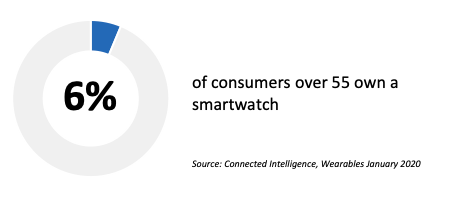
WatchMeGo from Sprint
The merger with T-Mobile may be almost consummated, but Sprint’s still moving forward with new plans and devices. The latest is a kid-focused watch – WatchMeGo – that is aimed at the under 13 year-old market (i.e., those that typically don’t have a smartphone yet). The WatchMeGo is $144 (or $6 a month for 24 months). What is interesting is that the watch works without a cellular connection for the basics such as tracking your little one, with an upsell opportunity to add security and communications.
The NPD Take
- It’s a low cost device to provide tracking, and looks like a normal watch rather than being particularly clunky as some kid trackers are. Think Swatch Watch, so relatively on target for the audience
- The upsell approach for communication services is far better than the forced sale. However, we’d like to see a lower price connection ($5 per month) to drive adoption and potentially a free connection for the first three months after purchase to get consumers hooked in the first place.
Dementia detection
A new global initiative launched by Alzheimer’s Research UK and part-funded by Bill Gates is looking to detect dementia earlier, using a smartwatch-like device. The device will use AI to monitor more than 30 indicators, including speech and sleep with the theory that lifestyle changes can slow the onset of dementia if caught early enough. A million British people are being recruited to test the device.
The NPD Take
- While the currently-proposed device is a customized one, specifically designed for the trials, this type of detection could be incorporated into more standard smartwatches, driving a key use case for the older population.
Smile, and Back Off!
Ford has developed a simple, but effective interactive jacket for cyclists. The prototype jacket has an LED display on its back that can display an emoji. Happy cyclists, presumably, will show a smiley face, while those feeling infringed upon by the car behind can display an angry face. More usefully, perhaps, is the ability to show directional signals (turn left and so on) allowing cyclists to keep both hands firmly on the handlebars. Control is via a wireless remote attached to the handlebars.
The NPD Take
- It’s a prototype, and so there is no pricing or availability information. But the concept is simple and we could see it being added to regular cycling gear, as well as urban cyclist gear such as jackets, over time. Simple and effective
- We can also see an opportunity for this in more regular clothing, with the LED capabilities woven into the fabric, allowing consumers to personalize their daily look. It’s the kind of product we expect will make it to the “fast fashion” category over time and could easily be controlled by your smartwatch (or smartphone) for on-the-fly mood changes.